

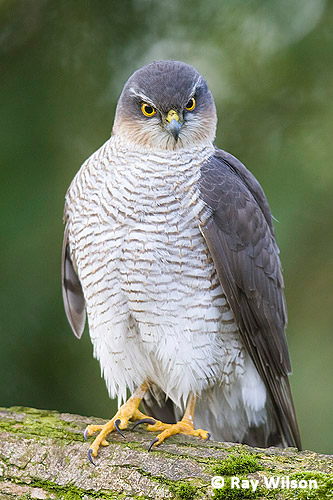 |
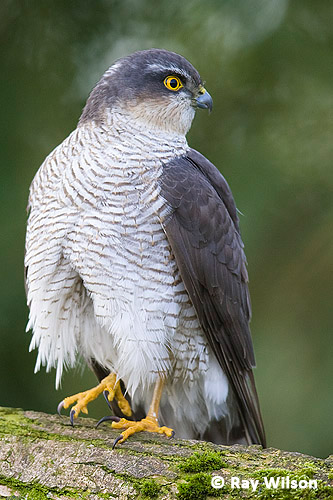 |
With an estimated population of around 1 million breeding pairs, the Eurasian Sparrowhawk is one of Eurasia's commonest and most widespread raptors.
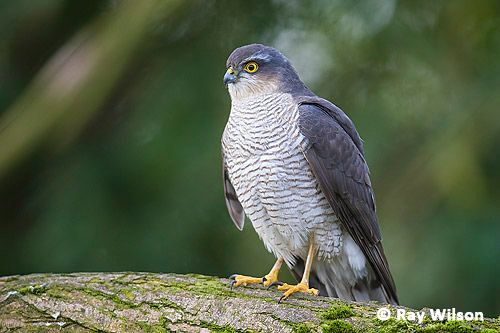
Throughout most of the 20th centuary the Sparrowhawk suffered greatly from persecution in Britain. First from gamekeepers, until the outbreak of the Second World War brought a decline in gamekeeping activity, then after a short respite the use of organochlorine pesticides (especially DDT) in the 1960's brought another catastrophic decline prompting the declaration of full legal protection in 1963. The banning of these chemicals for agricultural use in the early '70's signalled the beginning of the long slow road to recovery. The number of breeding pairs has continued to rise to the present day and the population is currently considered to be reaching its saturation point with approximately 45000pairs breeding today in Britain and Ireland.
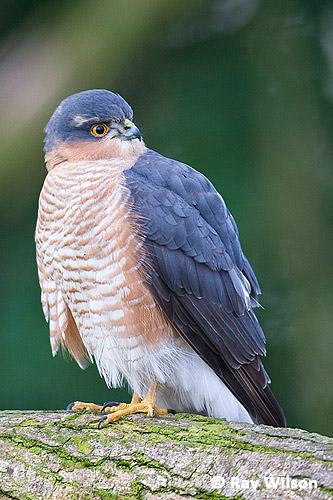 |
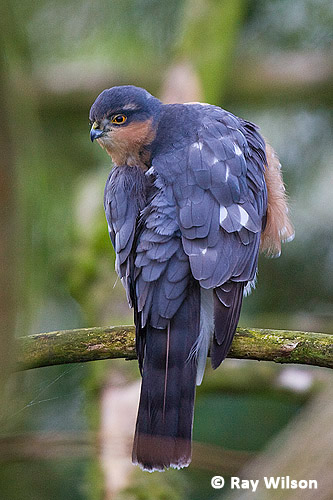 |
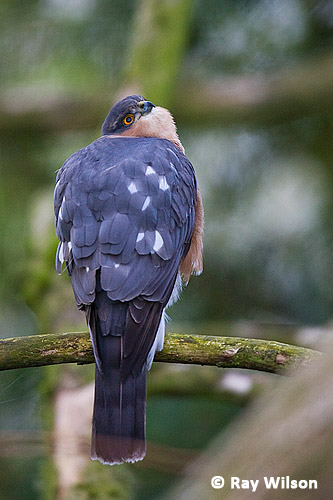 |
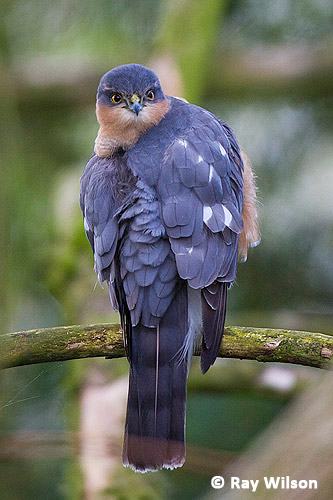 |
There is a large variation in size between the sexes, with the largest females being 50% larger than the largest males. This sexual dimorphism is also exhibited in their prey choice. Males almost exclusively eat small songbirds such as sparrows or finches up to about the size of a Song Thrush and tend to hunt within the cover of dense woodland, whereas females hunt in more open habitat such as woodland edges or along hedgerows and can take prey up to the size of doves or partridges, that can weigh up to 5 times that generally taken by males.
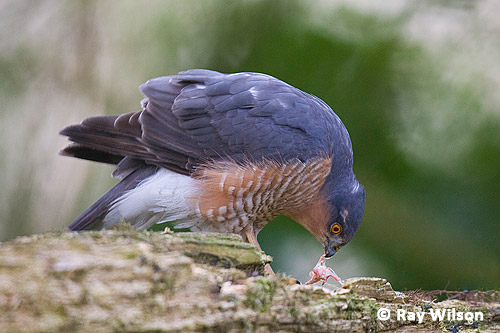
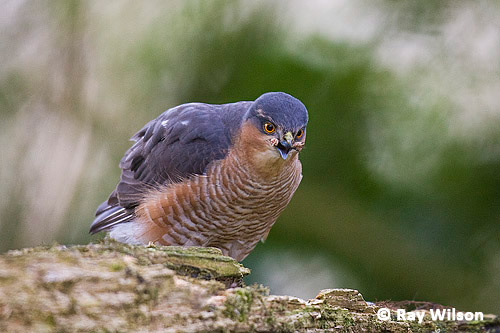
Both sexes are generally quite secretive and employ ambush tactics as their usual hunting strategy. This can involve a number of techniques including waiting in dense cover for a prey species to approach within striking distance, or flying rapidly at low level through an area of likely habitat, such as along a hedgerow, in the hope of catching a bird unawares.
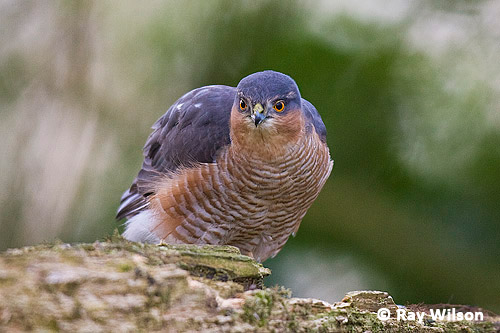
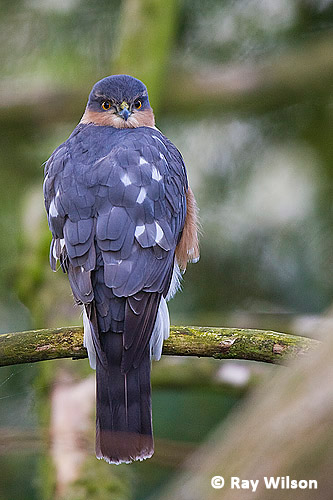
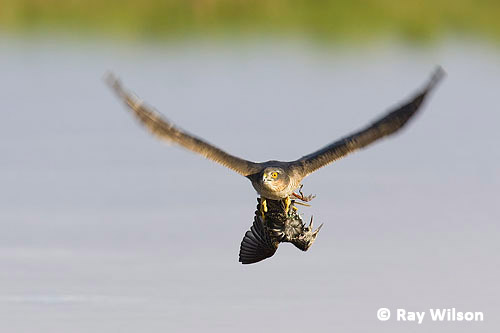
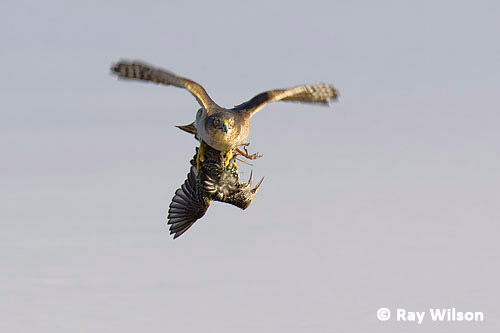
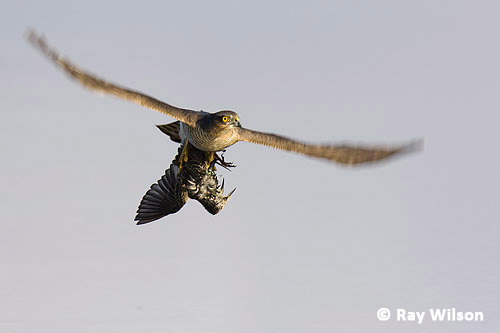
Ray Wilson owns the copyright of all images on this site.
They may not be used or copied in any form without prior written permission.
raywilsonphotography@googlemail.com